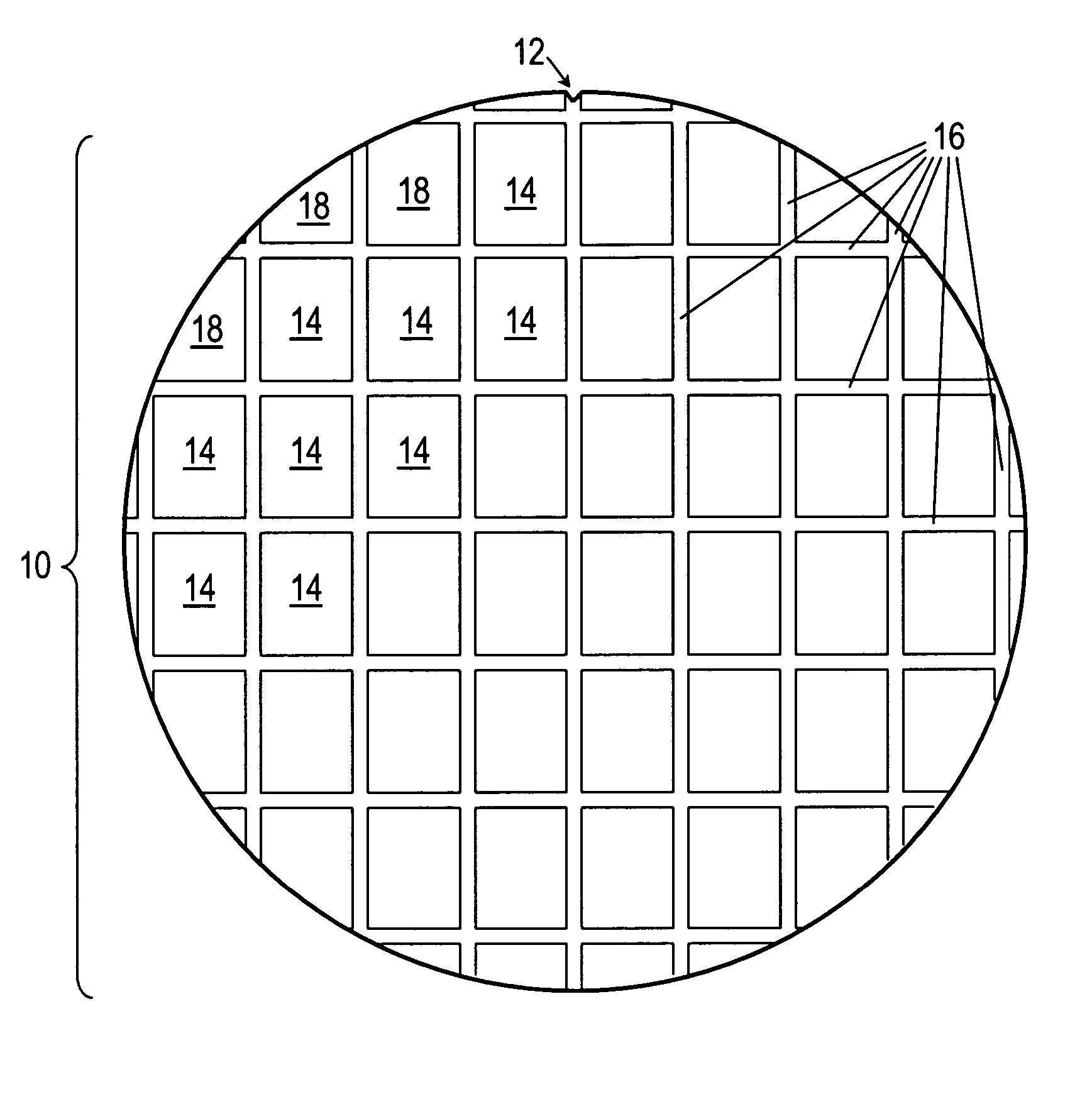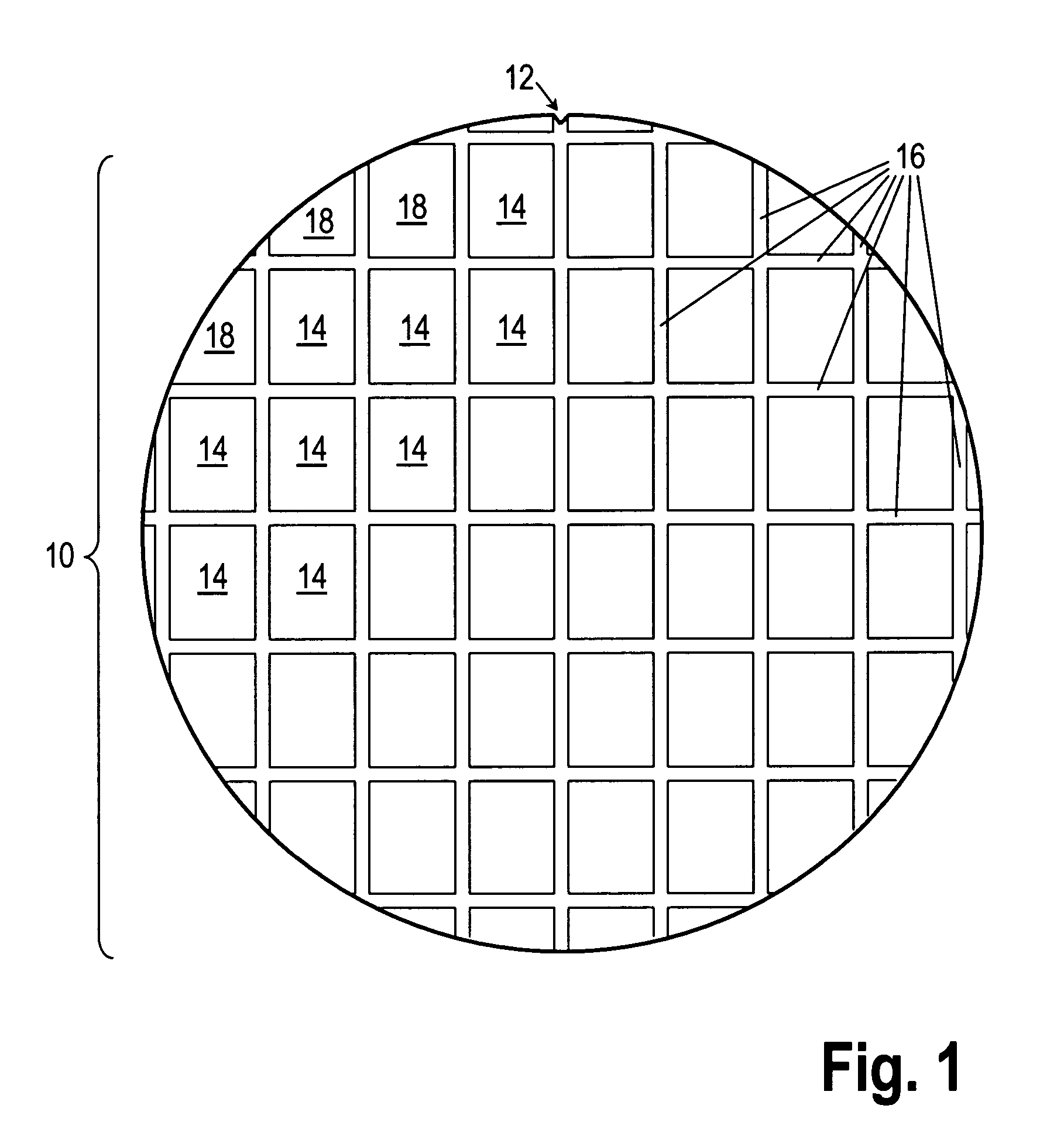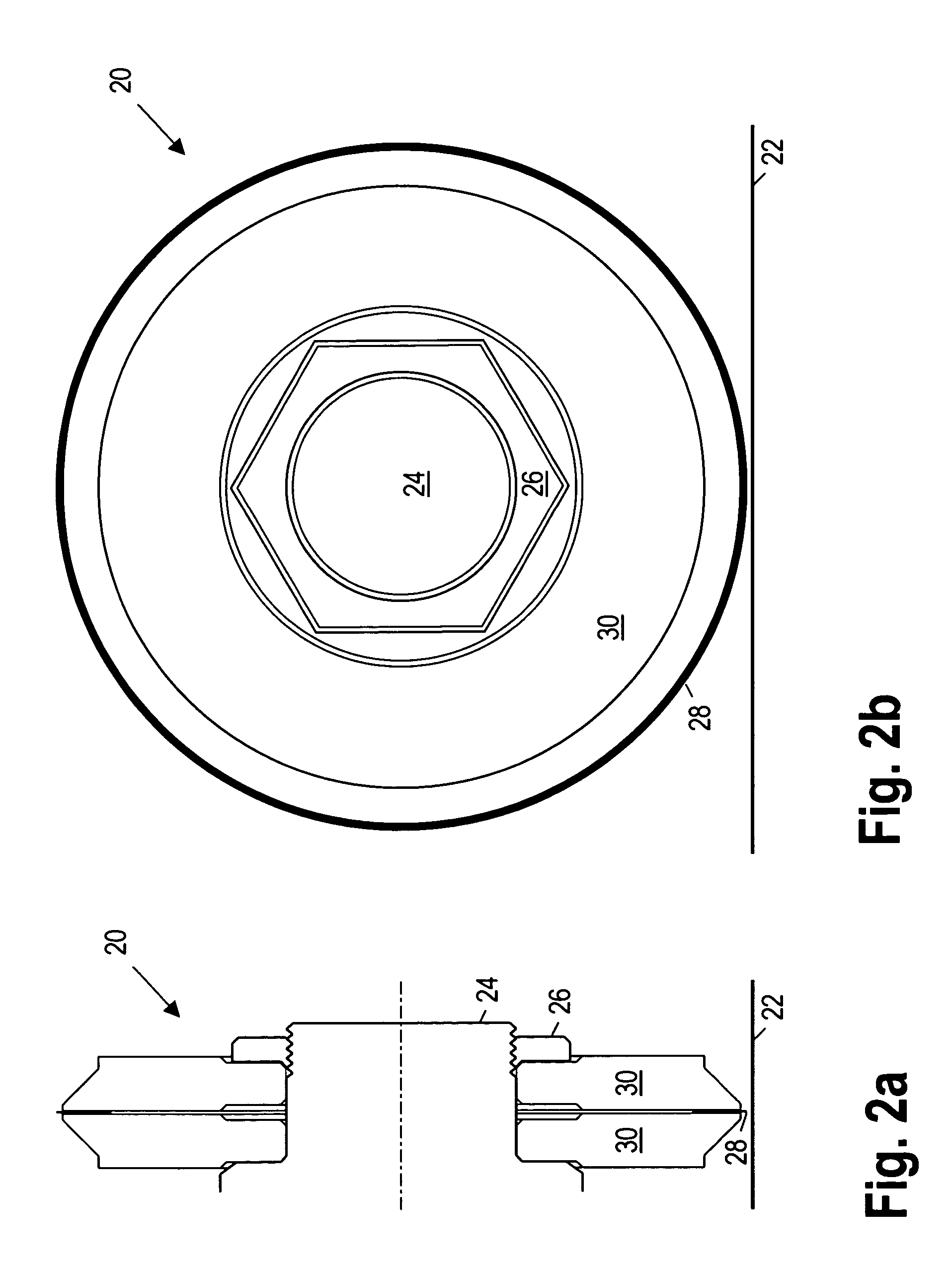Method for reducing stress concentrations on a semiconductor wafer by surface laser treatment
a laser treatment and stress concentration technology, applied in the direction of manufacturing tools, solid-state devices, welding/soldering/cutting articles, etc., can solve the problems of cracking and related cracking of the sawn edges, non-functional devices, and usable wafer surface area, so as to reduce stress concentration and reduce stress risers , the effect of the same material properties
- Summary
- Abstract
- Description
- Claims
- Application Information
AI Technical Summary
Benefits of technology
Problems solved by technology
Method used
Image
Examples
Embodiment Construction
[0033] The following discussion is directed to various embodiments of the invention. Although one or more of these embodiments may be preferred, the embodiments disclosed should not be interpreted, or otherwise used, as limiting the scope of the disclosure, including the claims, unless otherwise specified. In addition, one skilled in the art will understand that the following description has broad application, and the discussion of any embodiment is meant only to be exemplary of that embodiment, and not intended to intimate that the scope of the disclosure, including the claims, is limited to that embodiment.
[0034] A method is disclosed for reducing stress concentration levels on the surfaces of a semiconductor wafer by exposure to a laser beam, thereby lowering the potential for chipping and cracking of the wafer during singulation. Referring briefly to FIG. 1, the active surface of a semiconductor wafer 10 typically includes scribe streets 16, sacrificial areas that are sawn thro...
PUM
| Property | Measurement | Unit |
|---|---|---|
| Width | aaaaa | aaaaa |
| Area | aaaaa | aaaaa |
Abstract
Description
Claims
Application Information
 Login to View More
Login to View More - R&D
- Intellectual Property
- Life Sciences
- Materials
- Tech Scout
- Unparalleled Data Quality
- Higher Quality Content
- 60% Fewer Hallucinations
Browse by: Latest US Patents, China's latest patents, Technical Efficacy Thesaurus, Application Domain, Technology Topic, Popular Technical Reports.
© 2025 PatSnap. All rights reserved.Legal|Privacy policy|Modern Slavery Act Transparency Statement|Sitemap|About US| Contact US: help@patsnap.com



